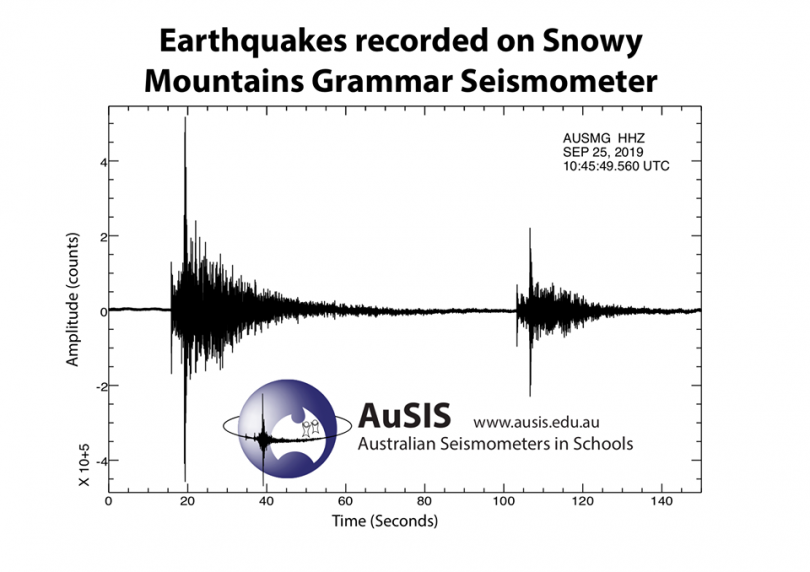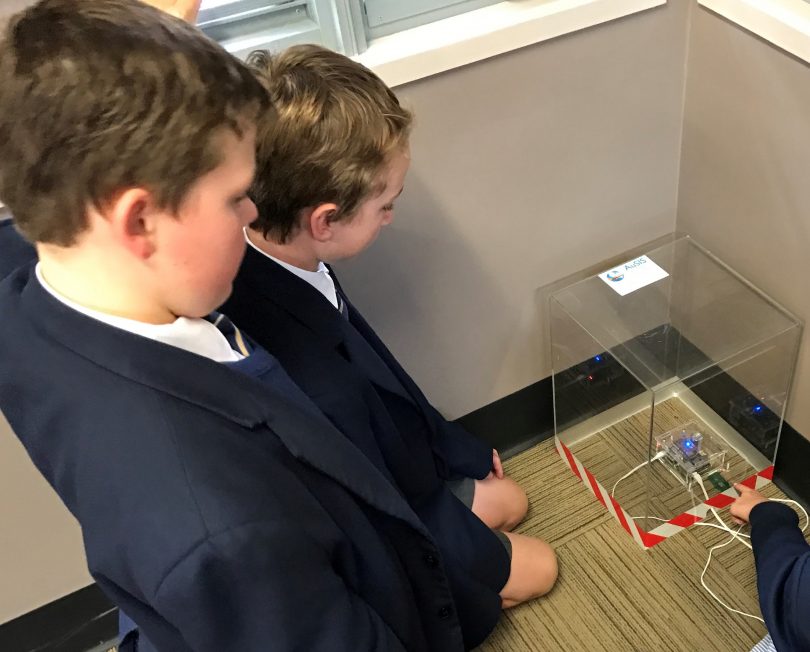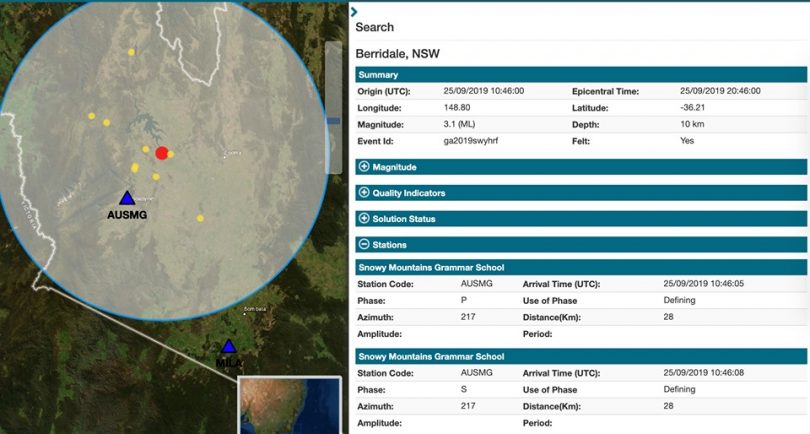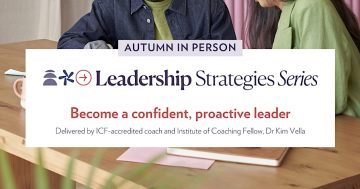
A trace of last night’s earthquake from the seismometer at Snowy Mountain Grammar. Photos: Supplied.
When the ground moved and rumbled last night (September 25) at Berridale it was specialised earthquake equipment at a local school that measured and recorded the event for the scientific world.
The seismometer at Snowy Mountains Grammar School in Jindabyne was installed the Australian National University (ANU) as part of their Seismometers in Schools Program.
Seismometers detect and measure seismic waves, and last night just before 9:00 pm the one at Snowy Mountains Grammer registered a 3.1 magnitude earthquake – giving weight to that funny feeling and sound people experienced from Lake George to Cooma to Bemboka and Nethercote.
“My phone just went off last night, it kept beeping, I had students emailing and contacting me – they know we’ve got the seismometer and they wanted to make sure we’d captured it [the earthquake],” says Dr Darryl Nelson, Science Teacher and Director of Curriculum and Operations at Snowy Mountains Grammar School.
“[The quake] was quite amazing, where I was near Berridale, near the epicenter there was a big jolt – it scared me, I thought – what’s that?!
“And then a really low rumble that lasted for about 20 seconds and then there were two more bangs after that.
“It actually consisted of two events separated by a short period of time.
“And this was a good one, they’re normally around magnitude two, this got to just over three.”

Students inspecting the seismometer at Snowy Mountain Grammar.
Darryl says the experience has been a talking point at school today and an educational opportunity.
“It’s such a great learning tool, we’ve just done tectonic plates with the students so it’s really exciting to have a real seismometer to refer to and work with,” he says.
“We’ve been told by ANU that we are quite crucial in the whole web of seismometers because this particular area is really prone to earthquakes and built on fault lines.
“The two most active areas in Australia are here and near Mount Gambier in South Australia.”
ANU has not long been to the school to upgrade the facility three years on from installing it and “they talk to students and add to their learning”, Darryl says.
“We are really grateful to ANU that this is in our school – it’s a great teaching tool.
“I just hope one day we get an earthquake when I am in the science lab teaching and we can go straight to the seismometer and have a look.”
The Australian Seismometers in Schools project includes 40 research quality broadband seismometers across Australia – from St Mary Star of the Sea in Carnarvon, Western Australia to Katherine High School in the Northern Territory to Taroona High School in Tasmania.
Apart from Snowy Mountains Grammar, other Canberra Region schools taking part are Ulladulla High, Melrose High at Pearce and Daramalan College at Dickson.
The aim of the program is to raise awareness of geoscience through observing our dynamic earth in motion. Students are required to look after their own seismometer and in doing so be a part of a national science experiment.

More detail from the seismometer at Snowy Mountain Grammar. Photo: SMGS Facebook.
Original Article published by Ian Campbell on About Regional.













